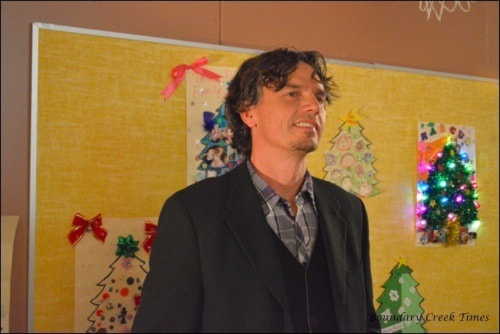“How do we make the report card richer?” asked Brian Foy, principal for the four West Boundary elementary schools at an after-school coffee table meeting with parents at Midway Elementary School earlier this month.
Developments in education such as personalized learning and individualized educational plans are taking education beyond where it has traditionally gone and as important as teaching is to what goes on at school, assessment is an equally important part of the experience.
The old curriculum more closely resembled a factory where each student was taught by rote and then asked to regurgitate the information on a test in a week or two. The result was an A, B, C, D or F. At the end of the term the teacher would add all of the scores up and send a report card home with one of the aforementioned letter grades.
Guiding the new report card format is the draft curriculum that is now being discussed for adoption across the province. The draft can be found online at www.curriculum.gov.bc.ca
It moves the focus from memorization to implanting ideas and concepts in each of the subjects being taught. These ideas and concepts are more easily accessible and understood by classroom teachers, students and parents.
“And that’s the magic, is how do we bring the three together on this individualized learning path,” explained Foy. Instead of learning and regurgitating facts, core competencies are created that focus on the particular skills a student needs to have in order to be a good learner, but more importantly, problem solving and critical thinking.
“Students will be successful if they have core competencies as strong, healthy communicators; creative and problem-solving and thinking skills, and personal and social skills,” he said.
The new report card format that the West Boundary elementary schools have been fine-tuning is intended to change the focus from the curriculum alone to more fully celebrate learning and the success of learning.
“To listen and regurgitate is only one aspect of a strong learner,” Foy said, “but it is about the only aspect currently celebrated.”
The new system strives to identify each student’s strengths and challenges.
For now the new report card format is being adopted solely in the four West Boundary elementary schools. Foy explained that every school principal and their staff choose a special focus and the new curriculum is the focus of the West Boundary elementary schools.
He said he’s looked at the experience of other districts, such as Maple Ridge. The primary grades have now gone three report card periods with the different report cards—each adapted a little bit from lessons learned.
Another significant change to the assessment process is the fact that the student is at the centre of the process. They first sit down one-on-one with their teacher and go through a checklist of skills and competencies specific to the course. Following that, the teacher alone will go through the same checklist.
It is hoped that the report card that goes home will act as a catalyst for discussion between the students and their parents. Foy says the process can bring life to that conversation. “The energy and focus is around what the student should know about themselves as a learner and how they can improve that. Then you as a parent have a great tool to get into a conversation with your child when they come home with their report card.”
Next the student, parent and teacher meet together in discussion. “This puts the focus in the right place,” explains Foy, “helping kids can set themselves up to do their best everyday. The magic is in the three parties coming together—talking about what went well, about the areas that are still a challenge and setting goals that everyone has a role in.”
He explained the participation of the student allows them to be part of the goal that is set, rather than being told what the goal is.
“If the child understands what they need to do and how to do it, the success of them actually being able to do it is four or five fold,” Foy said.
Foy said currently letter grades are still going home with the students; and he promised parents that if they are not comfortable with not having a letter grade, that practice could continue on an individual basis if parents so wish.
He said students will still have standards testing done in Grades 4, 7 and 10 and there will still be provincial exams in high school.
But he told the parents he sees the new report card format as a tool that creates more conversation and makes their child’s learning path more assessable to them as parents.
“It’s about relationships,” he said.
